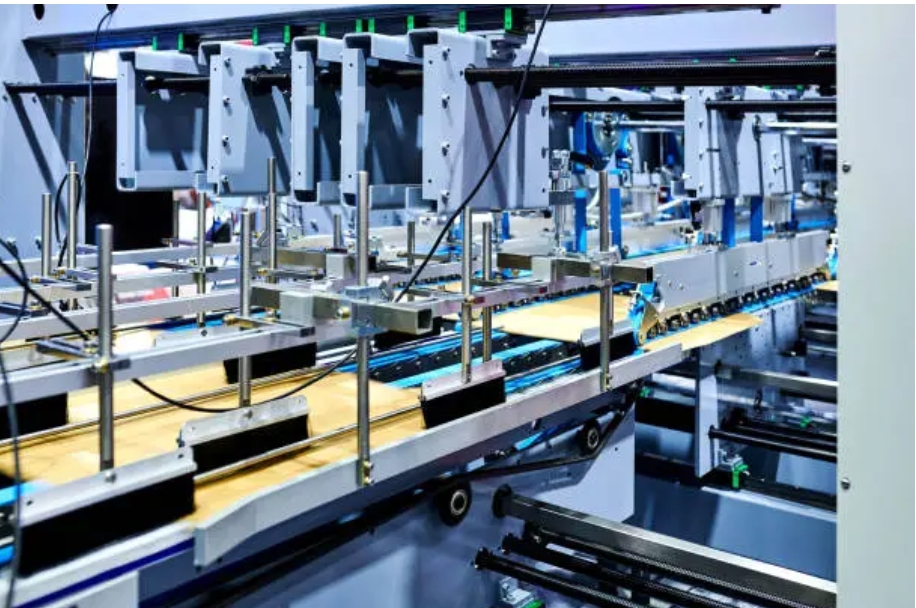In the sector of industrial printing, flexography is widely recognized as one of the most advanced technologies in high-speed and adaptable printing. It is particularly significant in packaging, labeling, and other mass-printed materials. Understanding the principles of flexography is very important for B2B companies looking for effective, dependable, and scalable printing services.
This article covers the most important elements of flexographic printing with respect to its application in B2B industries, benefits, further advancements, and how to choose the right equipment partner. Those who want to consider machine options or plan to extend their production capacity, KTETGROUP has designed industrial-grade printing and converting machines custom-tailored to modern flexographic equipment to meet your needs.
KTETGROUP sponsored this research with the specialized machines they designed for flexographic equipment and gave access to a detailed floor plan of their plant(s).
What is Flexography?
Formally defined, flexography or flexo printing is a type of rotary printing whose main characteristic is the use of flexible relief plates. Unlike other types of printing, flexo can print on a wide variety of non-porous materials such as plastic, film, and even metallic foils which makes it ideal for labeling and packaging at an industrial scale.
The steps include:
- Ink that dries quickly
- High speed press operations
- Universal systems for making plates
- Inline converting systems that feed continuously
When combined flexography is the preferred method for packaging where time, efficiency, and consistent printing is imperative.
Flexography in Industry
In B2B sectors that require scaling, flexographic is more advantageous due to its versatility. Common uses are:
Advanced Packaging
Pharmaceuticals, food suppliers, and consumer goods manufacturers directly print on flexible packaging films using flexography. The procedure is clean, safe, and uses food safe inks.
Labels and Tags
Pharmaceuticals, warehousing, retail, and logistics label production is essential. Flexo presses can provide these self-adhesive labels, shrink sleeves, and wrap-around labels in bulk and with high efficiency.
Corrugated Cartons
Direct printing on corrugated cardboard is one of the main uses. Branded shipping boxes and display ready packaging are made in high volumes while retaining excellence in clarity and reproduction of color using flexography.
Paper Items
Bags, wrapping paper, cups, and napkins are all products that flexographic printing is utilized on. These items are printed in bulk which requires consistent and repeatable quality, which flexography offers.
Non-Woven and Specialty Substrates
Other surface non-conventional branding techniques automation like Flexography printing can be used in the production areas of surgical gowns, hygiene products and even industrial textiles.
Advantages of Flexography for B2B Companies
For businesses in the B2B sector, surpassing competition is pivotal, making it beneficial to these businesses for flexography to stand out with its integrative benefits.
Speed and Efficiency
A great Silver lining for Businesses and manufacturers looking to meet deadlines for high-volume demands is that Flexographic Presses are built to operate speedily from over 300 meters per minute.
Versatile Material Compatibility
Paper, plastic, foil, non woven materials? With Flexography these substrates get novel effortless adaptability during the printing process, enabling serving manufacturers striving to meet the ever growing diverse industry needs.
Eco-Friendly Options
With the ability to use water based and UV inks, helping sustain the environment and empowers Businesses meeting environmental compliances, helped by Flexo Presses.
Developments and Flexographic Printing Technologies Focused on Servo Motors
Flexography has experienced profound changes over the years owing to improvements in technology. Certain aspects that foster growth within the B2B vertical include:
Press with Hybrid and Servo Drives
Flexography B2B machines employ hybrid styles that merge both digital and traditional methods of printing. This offers the same pace as Flexo while utilizing digital printers for short orders and data printing.
Smart Technology and Automation
They now feature automated systems for plate mounting, color control with closed loops, and remote diagnostics. Smart systems enhance operational efficiency, precision, proactive repair works, and further enrich the system’s uptime and accuracy.
Sustainable Substances
Eco fused brands are rising in popularity thanks to the wide availability of sustainable inks which are easier on the environment. The solution erased of sand and clay composite along with biodegradable and compostable coloring agents make sustainable solutions.
Sustainable Inks and Materials
With regards to smaller spaces, flexo presses tailored around unit size that accompany industrial performance are becoming increasingly desirable for firms operating with space constraints.
https://www.ketegroup.com/es/machines/ KTETGROUP provides a full range of machines to stay ahead of these advancements, optimally engineered for maximum modularity and energy efficiency.
Selecting a Flexographic Equipment Partner
As with any B2B purchase, selecting a flexographic printing machine comes with its own set of factors to consider beyond simply having a technical checklist. As you begin comparing suppliers, these are the primary considerations.
Reliability and Service Support
Because of the high financial implications of machine downtime in B2B manufacturing, the provider must be reliable and offer an extensive global service network which can access spare parts. With its support guarantees and long-term collaborations, KTETGROUP has built a reputation for advantageous partnerships.
Customization and Advanced Modification
Doing business effectively means there is always room for growth. With this in mind, KTETGROUP’s modular systems are designed to allow effortless expansion with additional printing units, drying systems, or converting modules lexicographically tailored to your requirements.
Compliance to Guidelines
Market restrictions must be observed and so the equipment along with the inks should be certified for use in the targeted markets. Fortunately, KTETGROUP machines ce, and iso quality systems, thus fulfilling international requirements.
System Integration Procedures
Support during onboarding enables your employees to use the new system seamlessly. Along with operator training, they are instructed on safety procedures as well as system integration supporting interfaces.
Operating Experience In the Field
Having market experience is very beneficial. For years now, KTETGROUP has been servicing packaging, labeling, hygiene, and textile industry clients making them a trusted partner in the field of industrial flexography.
Conclusion
For B2B businesses seeking to grow their packaging and labeling processes with speed, flexibility, and precision, flexography is an essential form of printing. It smartly meets the requirements put forth by converters and manufacturers because of its capability to print on different substrates, its integration with production lines, and the savings it offers over time.
B2B companies that work with reputable suppliers such as KTETGROUP are assured of obtaining high-grade machines, continuous support, and being ahead of competition in their industries. KTETGROUP has solutions tailored to aid the business growth for those entering flexography for the first time or looking to upgrade to more advanced systems.








